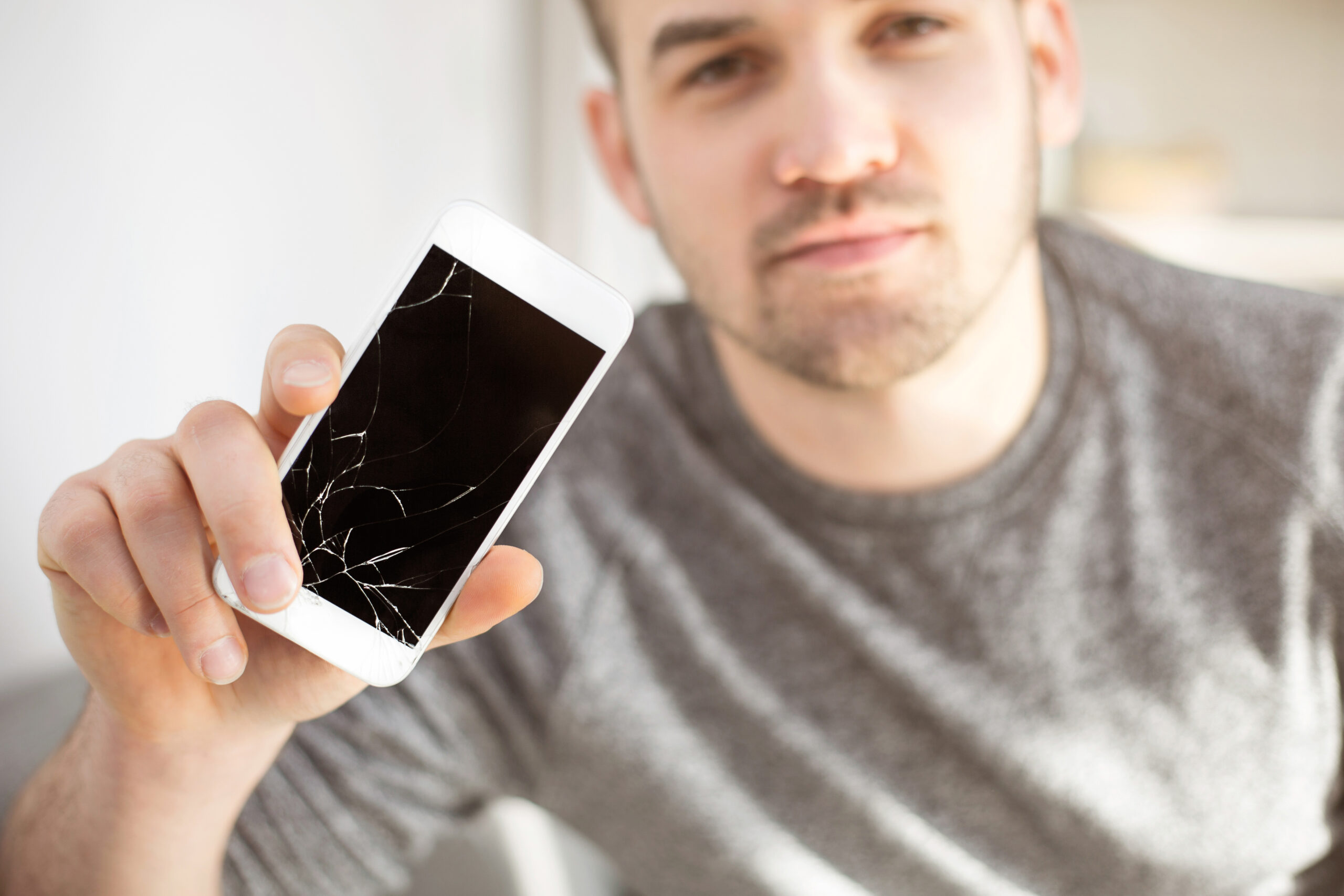Accidental Drops and Their Impact on iPhone Screens

Accidental drops are one of the biggest reasons for iPhone screen damage. It’s very easy to drop your phone whether you’re taking a selfie running to catch a bus or even just holding it while walking. When an iPhone falls the screen is often the first thing to hit the ground. Even though iPhones are built with strong materials like Ceramic Shield they can still crack or shatter if they land at the wrong angle or on a hard surface. This type of damage can make your iPhone screen hard to use or even completely black.
Another problem caused by drops is internal screen damage which is harder to see but just as serious. Sometimes the touch screen stops working properly or you might notice strange lines or colors on the display. Even a small drop can cause tiny cracks inside the screen that can grow worse over time. Using a strong case and screen protector can help prevent damage but accidents can still happen. That’s why it’s important to handle your iPhone carefully and avoid situations where it might fall.
Environmental Factors Leading to Screen Damage
Environmental factors like heat, cold and dust can also cause iPhone screen damage. For example if you leave your iPhone in direct sunlight for too long the screen can overheat which might lead to screen discoloration or even cracks due to expansion. On the other hand extreme cold can make the glass more brittle making it easier to crack if the phone is dropped. Weather conditions can affect how your iPhone screen behaves and lasts over time.
Dust and dirt are smaller but sneaky problems. Tiny particles can get into the edges of your iPhone screen and cause scratches. If you’re using your phone outside a lot especially in dusty or sandy places the risk is even higher. These small scratches may not seem like a big deal at first but they can make your screen weaker and more prone to cracking. To keep your iPhone safe it’s important to use it carefully in extreme weather and clean it gently when it gets dirty.
Pressure-Related Cracks and Stress Fractures
Pressure is another common cause of iPhone screen damage. If you accidentally sit on your phone, stuff it tightly into your pocket or place heavy objects on it the screen can crack. This type of damage is often called a stress fracture and it can happen even if you never drop your phone. iPhone screens are strong but they are not designed to handle too much pressure.
Stress fractures often start as tiny invisible cracks that grow larger over time. You might notice your screen looking a little foggy or see small lines across the glass. If the pressure continues these cracks can spread eventually making the screen unusable. To avoid this type of damage make sure you store your iPhone in a safe place where it won’t get squished or crushed.
Liquid Damage and Its Effects on Screen Performance
Water and other liquids are a big threat to iPhone screens. Even though some iPhones are water-resistant they are not completely waterproof. If liquid gets into the phone it can cause problems with the screen. You might see the display flickering, fading or even completely blacking out. Water damage can also cause the touch screen to stop responding properly which makes it very frustrating to use your phone.
Apart from water other liquids like coffee juice or soda can cause sticky residue under the screen making it worse. Even small splashes or drops of liquid can find their way into the phone and create long-term damage. To protect your iPhone avoid using it near water or liquids and always wipe it off quickly if it gets wet.
Scratches: Causes and Prevention Tips
Scratches may not seem as serious as cracks but they are one of the most common types of iPhone screen damage. Small scratches can happen when you put your phone in the same pocket or bag as your keys, coins or other sharp objects. Over time these tiny marks can make your screen look dull and harder to read.
To prevent scratches use a good-quality screen protector and avoid keeping your phone with sharp items. Cleaning your screen with a soft lint-free cloth can also help remove dust and prevent scratches. Scratches may not affect how your iPhone works but they can reduce its beauty and even make it easier for the screen to crack later.
Impact of Poor-Quality Screen Protectors on Damage
Using a poor-quality screen protector can actually make iPhone screen damage worse. Cheap screen protectors often don’t fit properly or fail to provide the protection they promise. Instead of protecting your phone from scratches and cracks they might even trap dirt and dust which can scratch the screen over time.
Good-quality screen protectors on the other hand add an extra layer of safety to your iPhone. They can absorb the shock of accidental drops and prevent minor scratches. Investing in a reliable screen protector is a smart way to keep your iPhone screen safe and reduce the chances of damage.
Types of iPhone Screen Damage: From Minor to Severe
iPhone screen damage comes in many types from small scratches to completely shattered screens. Minor damage like tiny scratches or small cracks may not affect how your phone works but can make it look less attractive. These types of damage are easier and cheaper to fix, often requiring only a new screen protector or a simple repair.
Severe damage like large cracks or blacked-out screens can make your iPhone almost impossible to use. This type of damage usually happens after a big drop or heavy pressure. In some cases the internal parts of the phone like the LCD or touch screen may also get damaged which can be very expensive to fix. Knowing the type of damage helps you decide if your phone needs a repair or a full screen replacement.
Repair vs. Replacement: What to Choose for a Damaged Screen
When your iPhone screen gets damaged you may wonder whether to repair it or replace it completely. Repairs are usually cheaper and faster especially for minor damage like scratches or small cracks. Many repair shops can fix an iPhone screen in just an hour or two getting your phone back to working condition quickly.
However if the screen damage is severe like a completely shattered display or internal screen problems a replacement may be the better option. Replacing the screen ensures that your phone works like new again but it can be more expensive. It’s important to weigh the cost and benefits of repair versus replacement before making your decision.
Conclusion
The causes and types of iPhone screen damage can save you time, money and frustration. By identifying the specific issue and taking preventive measures such as using quality screen protectors and cases you can extend the life of your iPhone. Additionally knowing when to opt for repairs or replacements ensures you maintain the functionality and value of your device. Protecting your iPhone screen is an investment in both its longevity and your peace of mind.




Leave a Comment